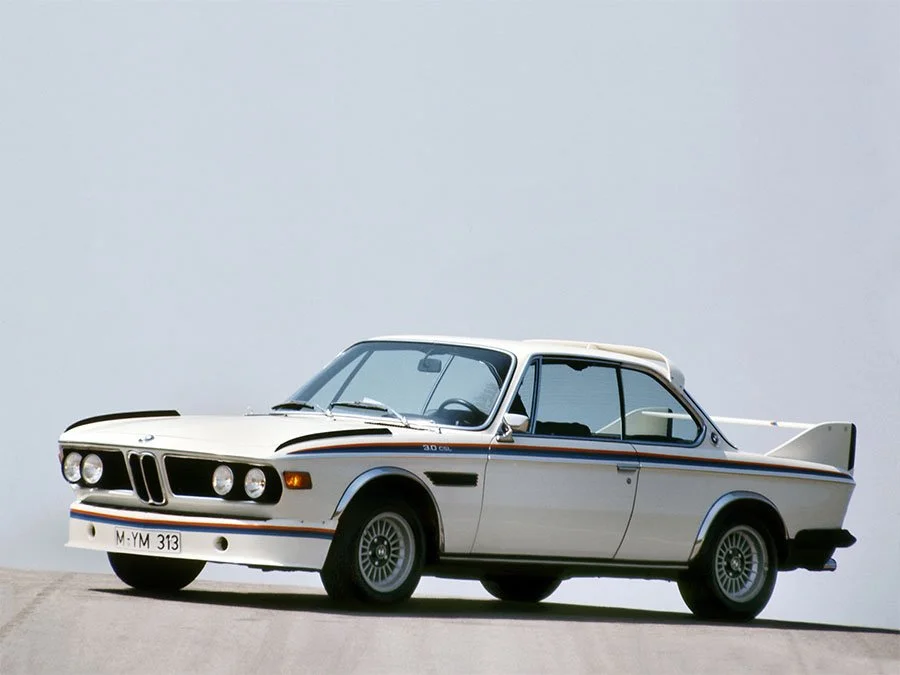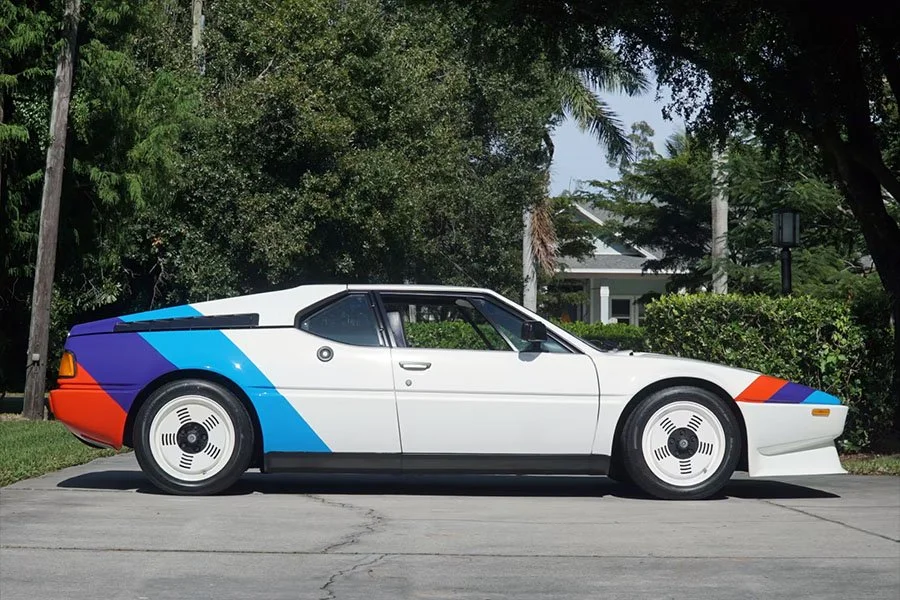Guide: BMW E9 3.2 CSL 'Batmobile' - a Historical & Technical Appraisal
/BACKGROUND
BMW Motorsport was established in early 1971 to develop an E9-based machine capable of winning the European Touring Car Championship (ETCC). The resultant 3.0 CSL made its debut at the beginning of the 1973 season, by which time the Ford Capri RS2600 had long since established itself as the dominant force.
In anticipation of the forthcoming campaign, BMW Motorsport assembled a stellar line up of drivers to include Chris Amon, Hans-Joachim Stuck, Toine Hezemans and Dieter Quester. The factory team would also support quasi-works cars from Alpina and Schnitzer whom had been racing the E9 2800 CS since 1970.
BMW Motorsport’s ETCC campaign was dovetailed with an attack on the domestic Deutsche Rennsport Meisterschaft (DRM). Alpina and Schnitzer campaigned their cars in the British and Belgian touring car championships as well as the ETCC.
Unfortunately, BMW Motorsport failed to win any of the opening three rounds of the 1973 European series; Alpina took victory at the opening race (the Monza 4 Hours) while Ford struck back to win the Salzburgring 4 Hours and Mantorp Park 500km.
Although the factory crew had won the only DRM race of the year thus far (and scored a class win at the Le Mans 24 Hours), it was clear further refinements would be needed if the CSL was to become the dominant force BMW expected.
Thankfully, BMW Motorsport had readied a package of updates for the second half of the year. The upgrades focused principally on airflow and the engine: a radical aero kit was devised and the engine was enlarged from 3.0 to 3.2-litres.
As a result of its striking new appearance, this latest iteration of the CSL was nicknamed Batmobile.
Although it now featured a 3.2-litre engine, the car was officially still referred to as a 3.0 CSL.
The competition upgrades were homologated from July 1st 1973 and, over the next four months, 110 road-going replicas were built (100 were required for homologation). A second batch of 57 cars was subsequently completed between January 1974 and October 1975 which took total production to 167 units (all of which were left-hand drive).
ENGINE / TRANSMISSION
At the heart of this latest CSL was a long stroke version of the existing Type M30 single overhead camshaft straight six engine. As usual, it featured a cast-iron block and light alloy two valve head with wet-sump lubrication.
The cylinder bores were kept at 89.25mm, but stroke was extended from 80mm to 84mm. As a consequence, overall displacement rose from 3003cc to 3153cc (a gain of 150cc).
The compression ratio was unchanged (9.5:1) as was the electronic Bosch fuel-injection system that had been used since March 1972.
Power output went from 200bhp at 5500rpm to 206bhp at 5600rpm.
There was also a little more torque on offer: 215lb-ft at 4200rpm compared to 204lb-ft at 4300rpm for the outgoing variant.
Like every CSL road car, this latest iteration was equipped with the same Getrag four-speed manual gearbox used in all the 3.0 E9 Coupes. Gear ratios were unchanged, but like the earlier fuel-injected 3.0 CSL, the rear axle ratio was 3.25:1 (instead of the 3.45:1 ratio used by early carb-fed examples).
As with the production CS and CSi, a limited-slip differential was standard.
BODYWORK
While the bigger engine gave a little more power and torque, the most radical update concerned the dramatic new aero kit.
To simultaneously reduce drag and improve downforce, BMW Motorsport devised a series of upgrades sometimes dubbed the Racking Kit.
The Racing Kit comprised a deep front spoiler, black rubber fences mounted atop the front fenders, bigger wheelarch extensions and a roof-mounted rear aerofoil.
There was also a new steel boot lid complete with split level spoiler. At the trailing edge of the boot lid was a discrete body coloured flap, above which was an enormous fibreglass wing with adjustable Gurney flap.
As the rear wing was not type approved in Germany, BMW Motorsport supplied it in the boot for installation after purchase. Some cars had a rear spoiler with a third (central) vertical pylon.
A new 3.0 CSL decal for the boot lid was fitted (instead of metal badge) and stripes were applied down the flanks and on the front spoiler. The stripes were either BMW Motorsport coloured or black (depending on the body shade).
Underneath the car, an improved sump shield was fitted to further smooth the airflow.
INTERIOR
Inside, little was changed.
Each CSL came with a variety of special parts to include Scheel bucket front seats (upholstered with leatherette bolsters and fabric centres), a small diameter three-spoke leather rimmed steering wheel and simple black roof lining.
To save weight, most of the sound insulation was absent along with all of the underseal and much of the boot trim.
Instrumentation comprised four gauges: a large speedometer and rev counter flanked to the right by a clock and to the left by a combined fuel / water temperature read out (which also housed several warning lights).
All four gauges were located directly behind the steering wheel in a simple curved binnacle that was neatly integrated with the rest of the dash.
Wooden inserts were fitted to the dash, instrument fascia, centre console and the tops of the door / side panels.
OPTIONS
Other than a choice of exterior colours, the only optional extra was comfort instead of bucket seats.
The City Pack that had been available on the 3.0 CSL (which re-instated many of the luxuries originally deleted to save weight) was no longer available.
WEIGHT / PERFORMANCE
As a result of the 3.2 CSL’s improved aero profile (drag was reputedly 16% lower than before) top speed was now 146mph (up from 140mph).
The 0-62mph time dropped from 6.5 to 6.4 seconds.
MOTORSPORT SUCCESS
During the second half of the 1973 racing season, BMW’s fortunes improved.
The CSL took victory in all five of the remaining ETCC rounds with works cars winning the Nurburgring 6 Hours, Spa 24 Hours, Zandvoort 4 Hours and Paul Ricard 6 Hours. Alpina won the Silverstone Tourist Trophy finale.
Toine Hezemans was crowned Drivers’ Champion and BMW claimed the Manufacturers’ crown.
Unfortunately, as a result of an Oil Crisis caused by instability in the Middle East, BMW made the late decision to run a dramatically reduced programme in 1974 and did not defend their titles.
END OF PRODUCTION
3.2 CSL production took place in two separate runs: from July 1973 to November 1973 and then from January 1974 to October 1975.
110 cars were completed in the first batch with chassis numbers that ranged from 2275430 to 2275539.
57 cars were completed in the second batch with chassis numbers that ranged from 4355001 to 4355057.
Text copyright: Supercar Nostalgia
Photo copyright: BMW - https://www.bmw.com

































